
|
The Drake Equation, Fermi Paradox, and SETI |

|
The Drake Equation, Fermi Paradox, and SETI |
|
People have long wondered whether we are unique or not. Frank Drake of Cornell University formulated what is now known as the Drake Equation in 1960 as a way to open the discussion on the possibility of intelligent life in the galaxy. At left is the Drake Equation and the meaning of the terms in the Drake Equation. We consider each term in the Drake Equation and come up with an answer as to the number of intelligent civilizations likely to exist in the Milky Way galaxy. The terms in blue are probabilites and facts which can be deduced from astrophysics. These terms can, in principle, be determined quantitatively. The sections in green are probabilities and numbers which come from biology, psychology, and sociology. These are much more difficult to estimate. |
Rate of star formation x
Lifetime = # of Stars in the Galaxy:
As an initial guess, the Milky Way galaxy contains 200 billion stars.
If the Milky Way galaxy is ten billion
years old, then the average rate of star formation has been
over the lifetime of the Galaxy. This is roughly correct as most measures
for other galaxies suggest that around 10 Solar masses of material goes into
star formation per year in typical galaxies. Estimates for our galaxy run from
several stars per year to tens of stars. Although, in principle, the star
formation rate is potentially the most reliable of the terms in the
Drake Equation, it is currently uncertain.
At birth, the galaxy contains no stars. If the rate of star formation is
1 per year and the lifetime of a star is 10 years, let's consider how the
stellar population evolves with time.
Fraction of stars with planetary systems:
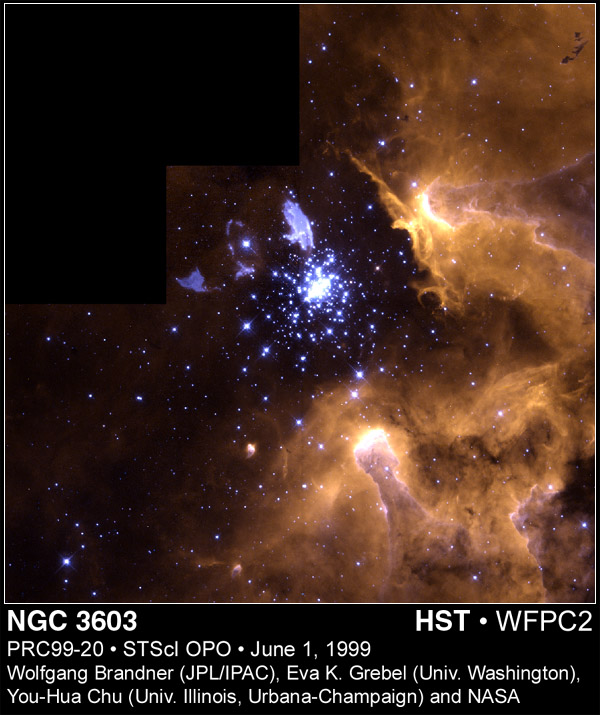
The number of stars in the Galaxy is determined by the rate at which stars
are formed and their lifetimes. We argue why this is so below but first, we
give the stellar birthrate for our Galaxy.
The appropriate value for the Lifetime will be discussed later.
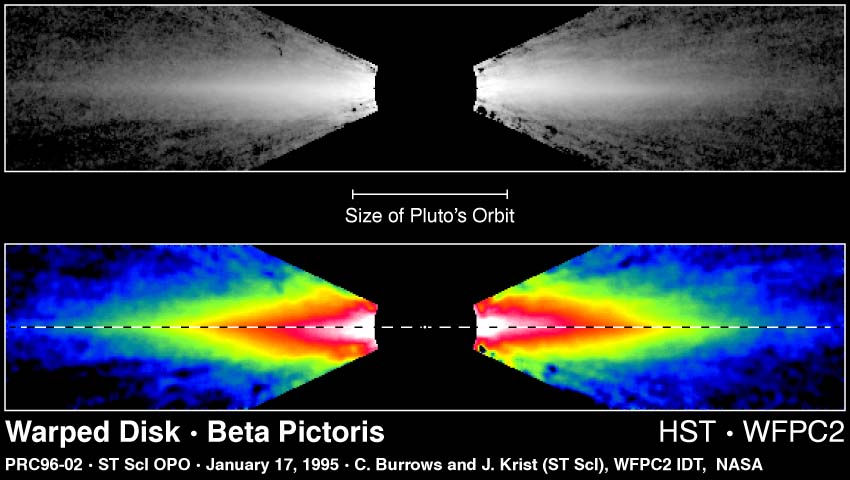
Beta Pictoris is 62.9 light years from the Sun and harbors an A5 V star surrounded a dusty disk which contains the so-called planet b, a Jupiter-sized planet, mass ~ 8 times that of Jupiter, whose orbit is like that of Saturn, 7.6-8.7 Astronomical Units. The bottom images show Planet b as it moved from one side of the disk to the other. |
We know that approximately 60 % of all
stars are in multiple star systems. Out of double star systems
a handful are known to contain planets. Consequently, we suggest
that the fraction of stars with planetary systems may be as large as
40-50 %. This, however, assumes that all places where planets can form that
they actually do form. Support for the idea that planetary formation is
natural and common has gotten stronger over the
last 20 years. For a discussion of the techniques used to discover planets
go to the NASA Planet Quest link above or
here. Around 5,000 confirmed extra-solar planets
have been discovered in
nearly 4,000 distinct planetary systems. This
suggests that when planetary systems can form, they do form and
we estimate that the fraction of stars that have planetary systems
is (optimistically)
|
Number of habitable (Terrestrial) planets per planetary system:
In our Solar System,
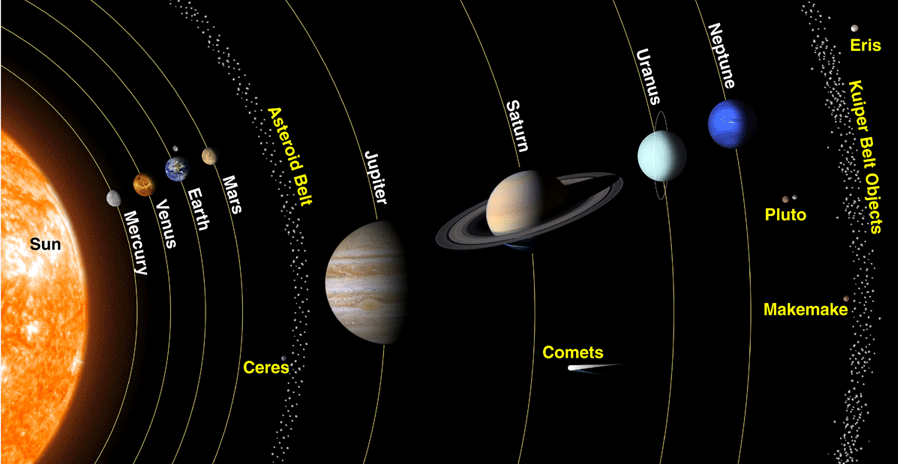 The planets are divided into three classes, the Terrestrial planets, the Jovian planets and the dwarf planets. Life As We Know It (LAWKI) requires that a planet have conditions such that they have liquid water (oceans). For the Solar System when we consider oceans that form on the surfaces of the planets we get the traditional Habitable Zone which stretches from around 0.7 Astronomical Units to (optimistically) 2 Astronomical Units. This range includes Venus, Earth, and Mars. 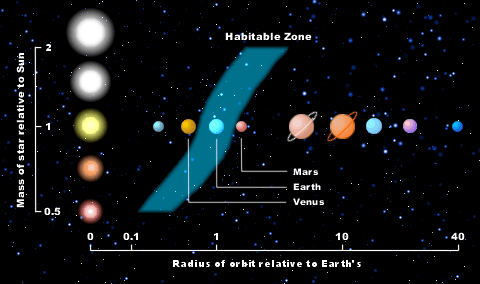
The size of the habitable zone as a function of the
central star. The habitable zones of low mass stars fall near the
stars. For our Solar System, Venus, Earth, and Mars fall within the
habitable zone. Today, only the Earth has liquid oceans and so
falls within this narrowly defined habitable zone. Why is
this so?
|
Implicit in the above discussion is that there are Earth-like planets (which are necessary for LAWKI) in the extra-Solar planetary systems which have been discovered. Presently, the number of Earth-like planets in habitable zones is around 30 (exoplanets.org); most planets which have been discovered are referred to as super-Earths and Neptune-like. To explore this and other questions, go to the website Exoplanets.org and use the plotting tool to see the discovered exoplanets and exosystems compare to us.
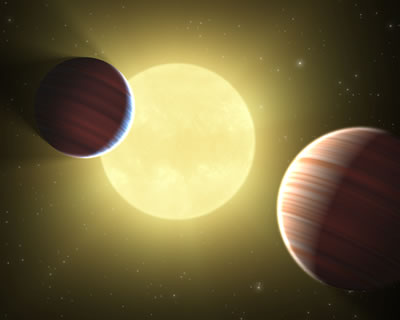
Artist's rendition of the two Saturn-sized planets in orbit about their star, named Kepler-9. The planets were named Kepler-b and Kepler-9c. |
Important work for discovering Earth-like planets is being performed by the NASA satellite Kepler. Kepler announced the discovery of two transiting planets in one planetary system. The two planets are around the mass of Saturn (~1/3 that of Jupiter) with tight orbits, periods 19 days and 38 days. The orbit of Saturn is ~9.6 Astronomical Units and Saturn's orbital period is around 29.5 years. Interestingly, there is evidence for a third planet with Earth-like properties, 1.5 times the mass of the Earth but in an orbit which is only 1.6 days long. The planet is not in the Habitable Zone, however, it orbits way too close to its parent star. |
In our Solar System, we have 1-2 planets in our traditional Habitable Zone. The overall situation is not clear because our view of the habitable is changing; we now include the moons of Jupiter and Saturn Europa and Enceladus within the Habitable Zone of our Solar System. Let's set (optimistically)